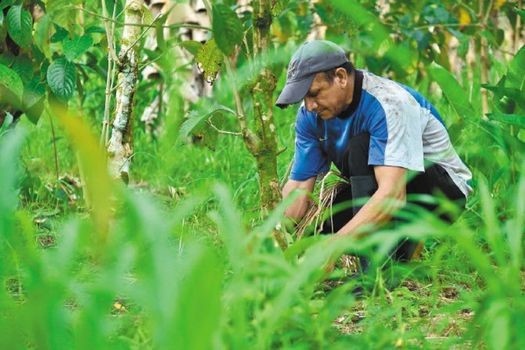The Peace Agreement establishes the commitment to promote access to land through five operations: adjudication, formalization, subsidies for access, promotion of Peasant Reserve Areas (ZRC), and restitution. In the joint exercises of the incoming and outgoing governments, they updated the information on managing the commitment to access to land, the progress of which is limited.
For the processes of adjudication or delivery of land, the Agreement establishes the creation of a Land Fund that has 3 million hectares to be delivered free of charge to landless peasants in the first 12 years of operation. This Fund was established in 2017; since then, between one and two million hectares have been entered. However, it is not possible to determine the exact number of hectares since the figures presented by official entities differ from each other: while the Comptroller General (CGR) reports the entry of 1,343,207 hectares by March 31st, 2022, the National Land Agency (ANT) reports 1,912,868 hectares to the fund by April 2022.
Additionally, it is not known what is the availability of adjudication (free delivery to peasants) of the lands that have entered the fund since 52% of the properties are occupied, 47% are pending determination of their occupation and only 1% of the properties do not present previous occupations. This means that over the majority of properties, rights recognize that proceeds (formalization) and not the adjudication.
Based on what the ANT reported, 25% of what entered the Fund has been distributed: 462,625 hectares to indigenous communities, 10,223 hectares to Afro-descendant communities, and 12,466 hectares to peasants. 84.4% of the hectares delivered are not located in targeted municipalities for the implementation of the Agreement.1
Regarding land formalization, the peace agreement stipulates that 7 million hectares must be formalized in the first 12 years of implementation. Because of this, the CGR reports that 2,129,156 hectares have been formalized 5 years after the Agreement was signed.2 Regarding these formalization figures, two things should be pointed out: first, there is no information on the people benefiting from the property titles; and second, these figures incorporate formalization processes initiated before the signing of the Peace Agreement.
The Attorney General’s Office indicates that after the signing of the Agreement, 913,548 hectares have been formalized; 93.4% of which correspond to collective titles of black communities and expansion of indigenous reservations.
As far as the ZRCs are concerned, during Duque’s Government, the commitment in Point 1 to promote these figures of association was not fulfilled. The entity in charge has imposed obstacles to the constitution of ZRC, for which it has been necessary to take legal action to process the constitution requests.
Nor has the first comprehensive land access subsidy (SIAT) been delivered, even though it was regulated in 2020; however, the Government presents the subsidies granted on account of judicial rulings in land restitution processes and others as compliance with the SIAT. According to this information, between 2017 and 2020, 262 subsidies have been delivered that benefit 579 families, of which only 171 are in prioritized municipalities for implementation.3
The information presented by the entities shows a critical balance. Neither the commitments at the rate established by the Agreement have been fulfilled nor have the objectives of democratization and deconcentration of land in the country.
1 “Observatorio de tierras (2022). Las deudas de la paz. Dimensiones agrarias”. Available at: https://www.observatoriodetierras.org/wp-content/uploads/2022/08/Las-deudas-de-la-paz-dimensiones-agrarias-1.pdf
2 “Informe Completo de empalme del sector agrario. Diagnóstico y Recomendaciones del empalme del sector agro”. Available at: https://vertov14.files.wordpress.com/2022/07/wp-1659125176120.pdf
3 “Observatorio de tierras (2022). Las deudas de la paz: dimensiones agrarias. IEPRI.”

